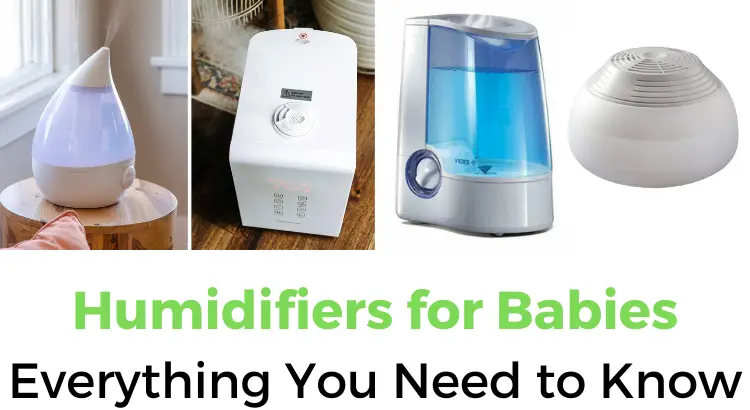Humidifiers for babies in the nursery are a great way to keep the air in their room comfortable and healthy. Babies are especially sensitive to temperature and humidity levels, so choosing the right type of humidifier is important.
In this blog post, we’ll discuss everything you need to know about humidifiers for babies, including how to choose the best one and how to use it properly. With the right information, you can make sure your baby has a safe and comfortable sleep environment.
The Benefits of a Humidifier for Baby
Humidifiers can be essential to keeping your baby comfortable, healthy, and safe. Humidifiers help keep the air in your home moist, which can be especially beneficial during the dry winter.
A humidifier can help keep a baby’s skin from becoming dry and itchy and help reduce nasal congestion. Humidifiers also help reduce air allergens, such as dust mites, pet dander, and pollen. This can be a great help if your baby suffers from allergies or asthma.
The air in the home is naturally drier in the winter months, so using a humidifier can help keep the allergens down and make it easier for your little one to breathe.
In addition to improving your baby’s comfort and health, humidifiers can also help protect furniture and other household items. Too much dry air can cause wood to crack and paint to peel, so a humidifier can help prevent this damage.
Finally, having a humidifier in your home can create a more peaceful environment. Babies tend to sleep better in a more humid atmosphere, so if you’re struggling with getting your little one to settle down at night, adding a humidifier could be the perfect solution.
How to Choose the Right Humidifier for a Baby
The first step in selecting a humidifier for babies determining the size and capacity needed. If you’re looking for a small room humidifier for your nursery, an ultrasonic or evaporative humidifier will likely work best. These smaller units typically come with an easy-to-read water level indicator, an adjustable mist output, and a timer to set the desired humidity level.
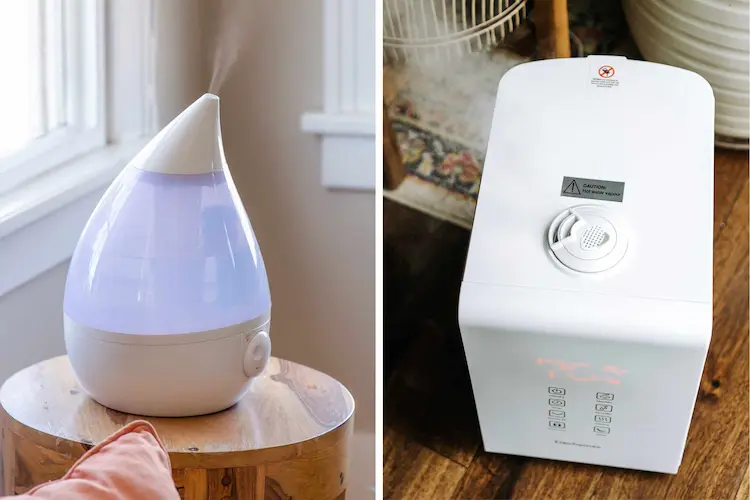
Consider a central or in-duct humidifier if you’re looking for a more extensive whole-home system. Central and in-duct humidifiers are usually installed in the ductwork of a forced air heating and cooling system and can provide humidity to an entire home.
Another important factor to consider when choosing a humidifier is the type of filter. Humidifiers can come with either reusable filters or washable filters. Reusable filters are the most common type and should be replaced every 1-3 months, depending on usage. Washable filters should be washed regularly to keep them clean and free of dust or dirt buildup.
Finally, research the warranty and maintenance information for your chosen humidifier. Many manufacturers offer warranties on their products, so read the fine print to ensure that you’ll be covered if something goes wrong. Also, review any recommended maintenance instructions to ensure your humidifier stays in good working order.
By taking the time to research and understand your options, you can choose the right humidifier for your baby that meets both your needs and budget.
The Different Types of Humidifiers
When it comes to humidifiers, there are several different types available to choose from. Each type of humidifier works in different ways and offers various benefits, so it’s important to know the different types and how they can help you and your baby:
Ultrasonic Humidifiers
These are one of the most popular options for parents looking for a humidifier for their baby. Ultrasonic humidifiers use high-frequency sound waves to generate an ultrasonic mist, which is dispersed into the air.
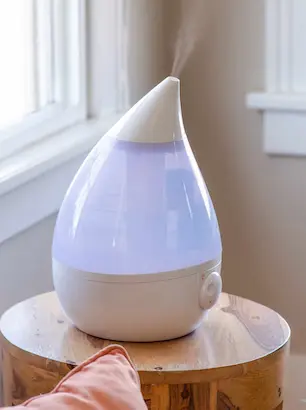
They are generally considered the safest option for babies as they don’t use heat, chemicals, or filters, making them safe to use in the nursery.
Evaporative Humidifiers
Evaporative humidifiers work by forcing air through a moistened filter or wick, releasing moisture into the air. This humidifier is good for larger rooms and doesn’t require a filter to be changed regularly.
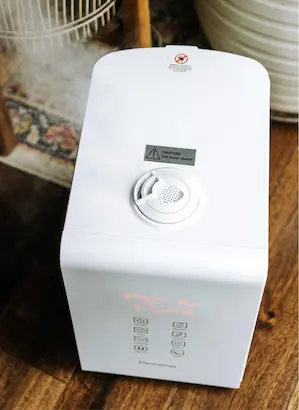
However, it requires more maintenance than other humidifiers, as the filters need to be periodically cleaned and replaced.
Steam Vaporizers
Steam vaporizers are often used in larger spaces and produce warm steam vapor released into the air. This type of humidifier uses electricity to heat water and can provide relief from cold and flu symptoms.
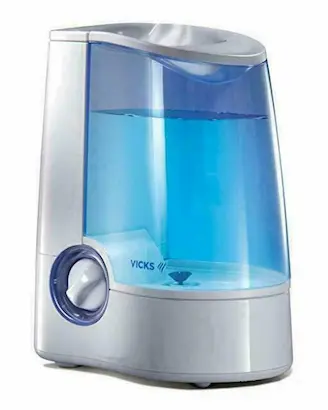
However, these should not be used in the nursery as they can create hot spots and cause burns if left too close to babies.
Impeller Humidifiers
Impeller humidifiers use a rotating disk that creates a cool mist, which is dispersed into the air. These are relatively quiet and don’t require regular filter changes, but they need more frequent cleaning as minerals can build up in the chamber.
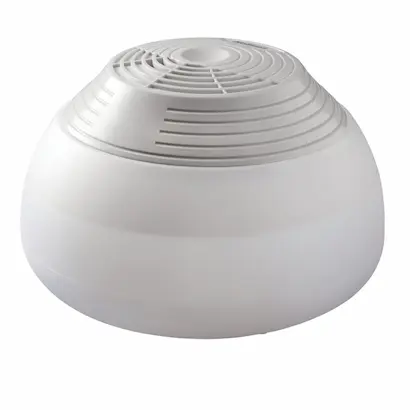
No matter what type of humidifier you choose for your baby, it’s important to follow all safety guidelines. Read all instructions carefully before using any humidifier in your baby’s room.
How to Use a Humidifier Safely
Using a humidifier for your baby’s room can be beneficial, but it is important to use it correctly to keep your baby safe and healthy. Here are some tips for using a humidifier safely:
- Check the humidity level: You should monitor the humidity level of your baby’s room with a hygrometer. The ideal range for a baby is between 40-60% relative humidity. If the room is too dry or too humid, you may need to adjust the settings on the humidifier accordingly.
- Clean the humidifier regularly: Cleaning your humidifier periodically prevents bacteria and mold from building up and creating an unhealthy environment. Follow the manufacturer’s instructions for cleaning your particular model.
- Use distilled water: Tap water can contain minerals that can accumulate in the humidifier and become a breeding ground for bacteria and mold. Use distilled water instead to reduce the risk of this buildup.
- Monitor your baby’s health: Pay attention to any signs of respiratory illness that may arise while using a humidifier. If your baby has breathing difficulties, it may be time to seek medical advice and turn off the humidifier.
By following these tips, you can ensure that you are using a humidifier safely and effectively to create a healthy and comfortable environment for your baby.
Tips for Maintaining Your Humidifier
Regular humidifier maintenance is essential to keep it running correctly and ensure your baby’s safety. Here are some tips for maintaining your humidifier:
- Change the Filter: The filter in your humidifier should be changed or cleaned every 2-3 months or more often if you have hard water. Check the manual for details on how often and how to clean the filter.
- Clean the Tank: The humidifier tank should be cleaned at least once a week to prevent bacteria and mold from building up. Unplug the unit, empty the water, and use mild detergent and warm water to clean it thoroughly.
- Refill With Distilled Water: When refilling the tank, use distilled water instead of tap water. This will help prevent mineral deposits from forming inside the tank and potentially clogging it up.
- Monitor Humidity Levels: Make sure to monitor the humidity levels in your home using a hygrometer, especially when your baby is young. Keeping the humidity level between 40-60% will help prevent the growth of mold and bacteria and reduce the risk of respiratory infections.
- Keep the Humidifier Away From Children: Since small parts can come off or get swallowed, it’s important to keep the humidifier out of reach of children.
By following these tips, you’ll be able to keep your baby’s humidifier running smoothly and safely.
